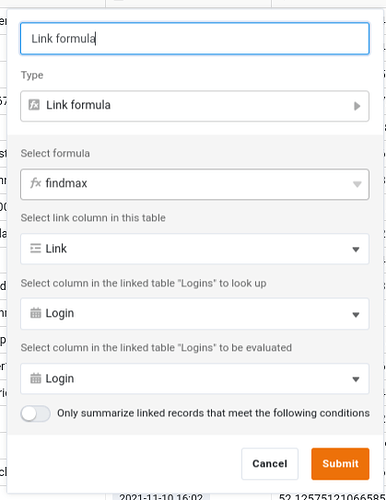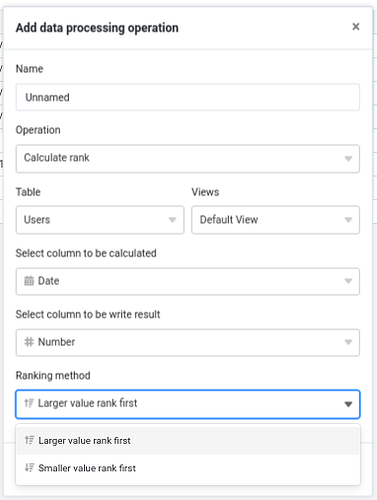Hello,
I have a table of product purchases that I have grouped by item number and sorted by purchase date. How can I get it to display only the last purchase of each item number (and not all of them)?
Thanks for your help.
I’m completely new to seatable and don’t understand how to use the findmax formula inside one single table. As far as I understood it needs two tables to work.
My table has 2000 rows with the different purchases of about 200 items (SKU). If I now group by SKU, all purchases of the respective SKU are listed one below the other. Now I can sort the display by delivery date in ascending or descending order.
However, I only want to see the last purchase with the most recent purchase date.
Link formula columns operate on a link column which (usually) require two tables.
SeaTable does not offer a filter “largest/smallest value”. But there is a way to achieve the desired result:
- Add one column of type number (I’ll call this column “Rank”)
- Run the data processing operation “Calculate rank” on the date column using the ranking method “Larger value rank first”, the result goes in the column “Rank”
- Create a view filtering on the column “Rank”; the filter should be “Rank = 1”
All features referred to above are included in the Free plan. The drawback: You have to rerun the data processing operation manually.
With the Enterprise plan, you can create a automation rule that calculates the rank periodically without your input.
Thanks for the suggested solution.
However, I have first grouped by item number and only want to see the last purchase of each item.
After grouping, I then have 200 items with 5-20 purchases each.
The Calculate Rank function creates a ranking of 1-2000 across all items in the newly inserted “Rank” column, and not a ranking within the grouping (per item).
Or is there any way to modify the function?
Thanks again for your help.
Modify your data model as follows:
- Table “Items”
- Table “Purchases”
- Add a link column
- Link the purchases to the items (you can use the data processing operation “Auto add link”)
- Add a link formula column and use the findmax function to show the date of the latest purchase
You currently use SeaTable like a spreadsheet.But SeaTable is a (relational) database. By using like a (relational) database, you can seize the full power of SeaTable.
Thank you for the further explanation. Now I (hopefully) understand it.
This topic was automatically closed 2 days after the last reply. New replies are no longer allowed.



